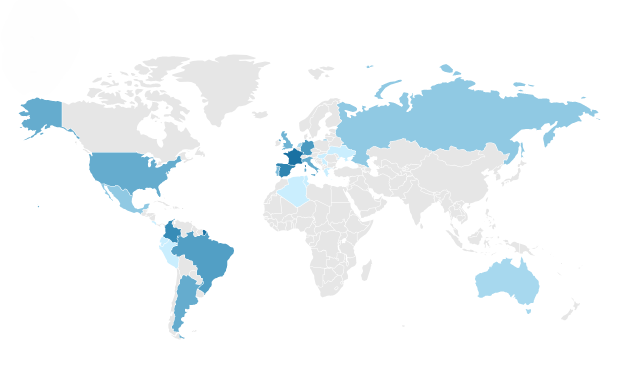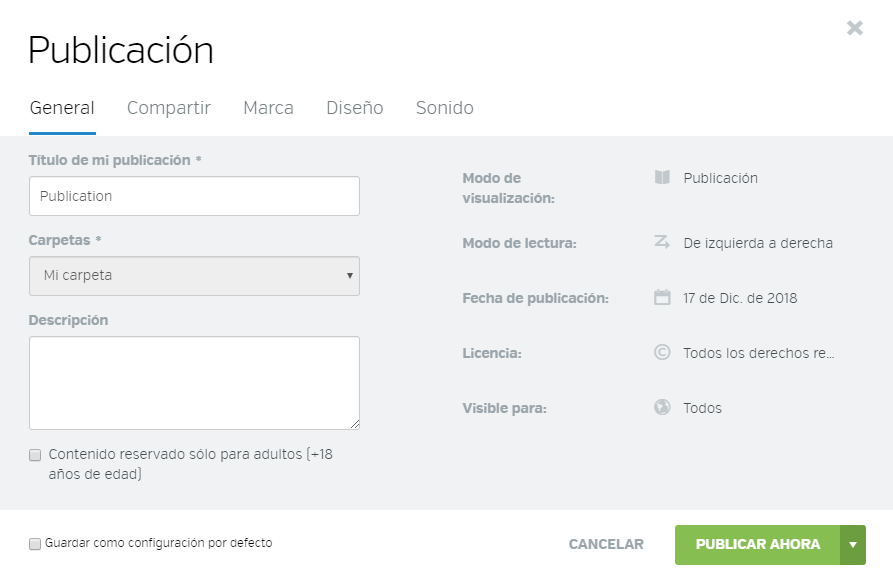If you have important content to share online, then you need a digital publishing strategy. This can be a part of larger business plan or as simple as a set of guidelines. Not sure where to get started? Our simple checklist will help you develop your digital publishing strategy, no matter what you want to achieve.
Define your goals
First, think about the objectives you have for your content. Don’t rush this step—it’s the most essential information you’ll need to establish your strategy. Because the rest will follow from here, take some time to define your digital publishing goals.
These might include:
- Improving your site’s SEO
- Building your business’s brand
- Communicating with colleagues
- Generating leads
- Sharing sales material with prospects
Above all, make sure to prioritize. It’s normal to have multiple goals, but challenging to accomplish them all at once. Be honest with yourself about your top objectives and remember that different types of content can have different purposes.
Choose your channels
Now that you have a clear idea of your goals, you can select the channels that you will use to publish your digital content. Maintaining an active presence on as many channels as possible is a good idea. However, keep your priorities in mind and focus on the channels that match your most important goals.
SOCIAL MEDIA
Social media channels can be a great fit for sharing content that builds your business’s brand. Research which kinds of content perform best on the platforms that interest you. For example, Twitter is often associated with content related to news, while compelling visuals are a must for Instagram.
BLOG
A blog is a key channel for content aimed at improving your site’s SEO and generating leads. What’s more, blogs are now easy to set up and manage. If you’re starting from scratch, figure out the blogging platform that best meets your needs. If you already have a blog, do a quick audit to see the content that is succeeding and where there’s room for improvement.
LONG-FORM CONTENT
Some types of more complex content may not make sense to publish as a simple blog article. This is especially true for sales material, like a prospectus or brochure, and internal communications material, like an employee handbook. Because this content tends to be longer and have more striking graphics, it should be available to share from an intranet or digital publishing platform.
Create a production schedule
Once you have decided on the channels that work best for your goals, it’s time to create a production schedule for your digital content. Make a list of the subjects that you will cover and plan the frequency and format of your publishing. In other words, decide how often you want to publish to each of your channels and what kinds of content you will create.
Most importantly, be realistic about how much you will be able to publish on the channels that you will use. Don’t forget that some content is faster to produce than others. For example, a blog post won’t take as much time to write as a white paper. But when in doubt, pick quality over quantity. Publishing less is a smart strategy if your content is interesting, well-written and attractive.
Determine promotion needs
Even amazing content can benefit from an extra push to connect with your online audience. Although you’ve already chosen the right channels for your goals, other channels still offer great opportunities for promoting your content. You could post a link to your most recent blog article on your social media channels and reach new followers. Or you could embed long-form content on your blog for readers to discover. In addition, email newsletters and paid advertisements are two popular options to consider.
For each type of content on your production schedule, select at least one way that you will use to distribute it.
Decide measurement metrics
Analyzing the impact of your content is a critical step to develop your digital publishing strategy. Before you start hitting that Post button, look at the goals you defined at beginning of this checklist. To know whether you achieve them, you’ll need to establish which data points will be most relevant.
For instance, you may want to measure how many times your content has been downloaded. This may tell you whether it is appealing to readers and allowing you to communicate successfully with colleagues, prospects or leads. With other metrics, such as the number of pages viewed or the conversion rate, you can begin to evaluate the effectiveness of your approach.
Gather data regularly and note the patterns that emerge. As you continue to develop your digital publishing strategy, use these insights to adapt your content and keep moving toward your goals.
Ready to develop your approach to online content? We’ve outlined all the essential steps in one handy digital publishing strategy checklist. Download your copy now and start making the most out of your content.





